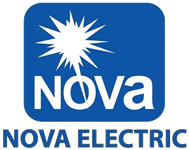The Different Type of UPS Systems Available
Public utility supplied AC voltage is seldom a steady 120V AC. Power can dip down to around 100V, and peak into the 130V region without major problems. However, if power falls outside this range, you can lose computer data and cause damage your hardware.
To prevent under-voltage “brownouts” and over-voltage “power surges”, some on-line UPS systems can correct utility power ranging from 85V into the mid-130Vs. They also keep loads safe from spikes, or those brief moments when lightning or other energy sources send mega-voltage flowing through the power line. The UPS’s Radio Frequency Interference (RFI) filter prevents line-noise interference that might come from other electrical products in the office (fans, microwave ovens, fluorescent lights, etc.)
There are three basic types of UPS systems:
- On-line UPS systems are ideally suited to networks running mission-critical applications. On-line UPSs (Uninterruptible Power Supply) take in all types of voltages and frequencies and continuously create clean, regulated AC power. Some on-line UPSs can compensate for under-voltage and over-voltage without using the battery, saving battery time for use only in complete blackouts. These are also called “double conversion” UPS, due to their method of accepting AC input, rectifying to DC for passing through the rechargeable battery pack, then inverting back to AC for powering the protected equipment. Thus, the primary advantage of Online or “double conversion” UPS is that there is zero interruption to the load if utility fails, since there is no “transfer” to battery power as with Standby or Line Interactive UPS. For this reason, Nova Electric manufactures and sells only True Online UPS, which is the only serious choice for mission critical loads.
- Standby, or “off-line” UPS systems provide utility power during normal operation. When voltage (and sometimes frequency) changes become severe, the standby UPS starts an internal inverter that takes DC power from the battery and turns it into AC power to run your system. The standby UPS does not regulate incoming power and therefore is not recommended for networking systems. These are typically used in non-critical commercial office applications.
- Line-interactive UPSs provide a measure of voltage regulation by “boosting” utility voltage up or “bucking” it down before passing it to your system. For some types of line-interactive models, the UPS uses the battery for this type of voltage regulation, and thus its battery life is shorter than that of on-line models. These are typically used in non-critical homeowner applications.
The UPS’s power rating is measured in VA or kVA. Here’s how to determine the power rating you’ll need:
- List all the equipment you need to protect.
- Multiply the nameplate voltage and amperage for each piece of equipment to obtain your VA (the product of volts and amperes). If the equipment is specified only in watts, divide the watts by 0.7 to obtain VA in Root Mean Square (RMS) values, which is how the UPS’s capacity is calculated.
- Add the individual VA requirements to get your total system’s needs. For example, if your VA requirements are 770VA and you purchase a 900VA UPS, remember that your full-load runtime–the amount of battery run time you can expect when running at full load–is likely to be short. For extended runtime, you can purchase add-on battery packs from the vendor. When sizing the UPS, be sure to allow for start-up surges. It never hurts to have too much margin!
Alternatively, you can purchase a higher rated UPS when you need more run time. This is usually more desirable for many reasons. These include:
- A UPS system with a higher rating will allow for load expansion in the future.
- A UPS system with a higher rating is usually less costly than one with an add-on battery pack. This is true because you now have the cost of two enclosures, and the interconnections associated with this.
- The load characteristics associated with computer type loads is such that the current waveform (the shape of the current that the typical computer power supply consumes) is very non-linear. This results in a typical crest factor (the ratio of peak to RMS current values) in the order of 3:1. In order to properly supply this type of load without undue stress on the UPS, and without causing undue AC output harmonic distortion, it is advisable to derate the UPS by 50% anyway. This can translate into the longer run time desired, without any significant price increases due to over sizing the UPS.
In addition to the UPS rating, one should consider the application. Whether the UPS system will be rack mounted or free standing is an important considerations. The environmental characteristics are also important factors. Temperature will severely affect the battery operating time, and the battery life. Dirt, shock, vibration, and humidity are other important environmental issues to be aware of. Nova Electric has special UPS systems for many of these unique harsh environment applications.
